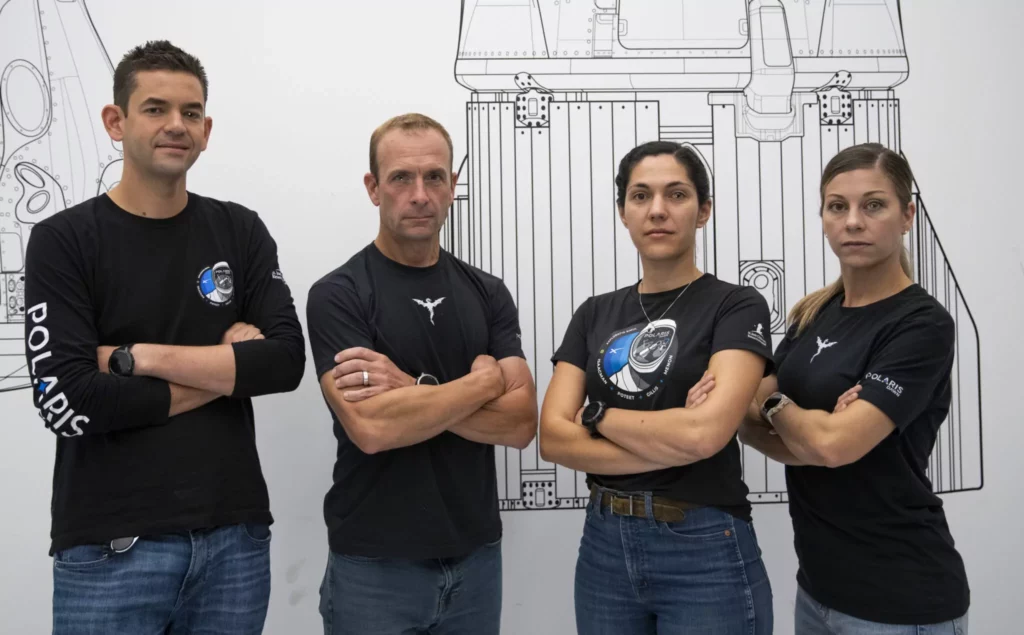In March 2023, four private astronauts will launch on a SpaceX Crew Dragon capsule on a mission that will mark the first time humans not sponsored by a government will conduct a spacewalk. It’s a pretty big deal and an important step up for the private space industry. But that’s not what got people excited on the internet.
Instead, this picture below showing the crew members with cyborg-like left eyes with a halo ring of light has grabbed all the attention. What’s the deal with that?

Anna Menon, one of the crew members of SpaceX’s private Polaris Dawn mission pictured above, took to Twitter to explain what in the heck is going on here, sharing a closeup video. This angle is even creepier than in the press photos, showing a small white rectangle reflecting off the astronaut’s pupils.
According to Menon, she’s testing special contact lenses that will be worn by all crew members during their mission. The contact lens is equipped with tiny sensors that measure intraocular pressure and gather information about a condition called Spaceflight Associated Neuroocular Syndrome (SANS). SANS is essentially a constellation of visual impairment symptoms that affects virtually all astronauts undergoing long-duration space flight. These include swelling of the nerve as it enters the eye, blurry vision, flattening of the back of the eye, and folds developing in the retina.
Scientists believe that SANS is caused by blood and cerebrospinal fluid shifting toward the head due to weightlessness. These smart contact lenses will constantly measure changes in pressure in the brain and eye, as well as how vision changes on orbit, to test whether the headward fluid shift is indeed responsible for SANS.


This particular experiment is just one of 38 proposed studies for the five-day mission. Some of these experiments are meant to study bone and muscle loss caused by microgravity, which is another known health problem astronauts living in space face. Another notable study will employ glucose monitors to see how astronauts with diabetes could manage their condition while in space. The program will share a final list of experiments approved to fly closer to the scheduled launch for March 2023, but one thing’s for sure: the astronauts want to make every minute in space count.
“Our science and research agenda will enhance the body of knowledge for future long-duration spaceflight, which will take us back to the moon and on to Mars; as well as progress our knowledge and understanding for humankind here on Earth,” businessman and pilot Jared Isaacman said in a statement. “The Polaris Dawn team along with the exceptional science and research team at SpaceX cast a wide net to find the best experiments to fly with us.”
Along with three other astronauts, Isaacman was part of the Inspiration 4 crew, the world’s first all-civilian mission to orbit that launched in 2021. After this initial success, Isaacman founded the Polaris Program with Polaris Dawn being the first of three spaceflight missions. The very final flight under the proposed Polaris Program would involve the first human spaceflight of SpaceX’s newest spacecraft, Starship, the tallest and most powerful rocket ever built. Starship is ultimately designed to take astronauts to Mars.


